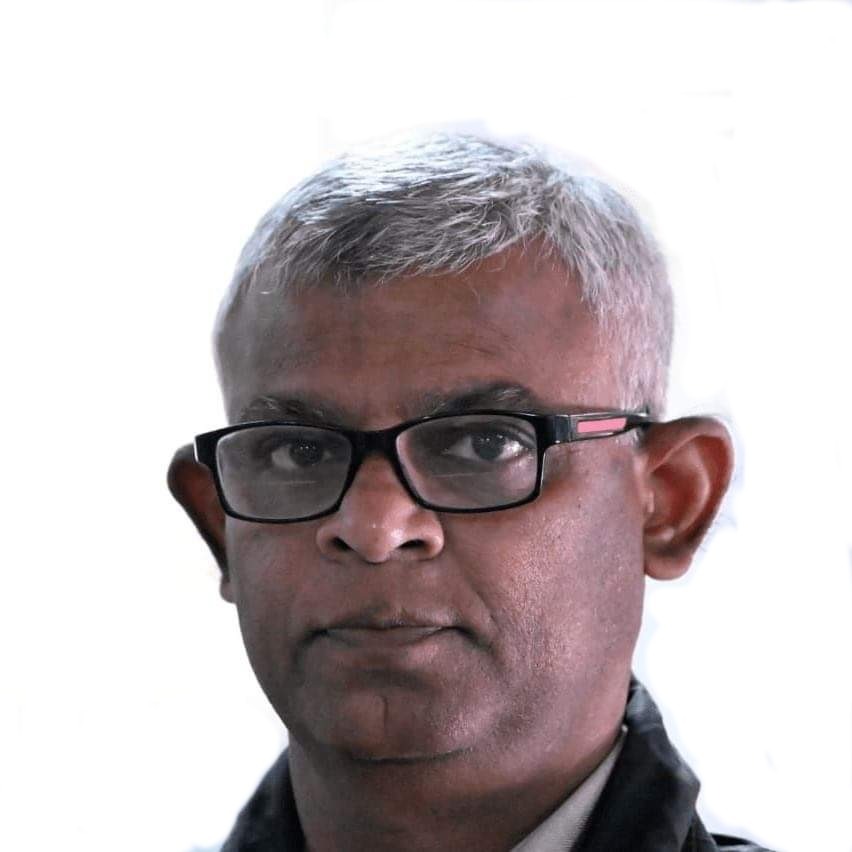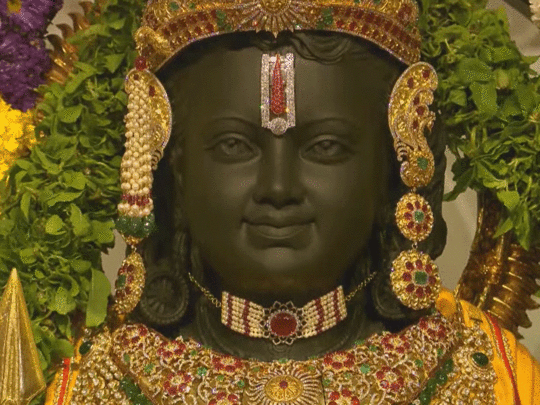“Tatah ch dwadase mase chaitre navamike tithou…” meaning, on the ninth day of the bright half of the month of Chaitra, under the Punarvasu Nakshatra and with Cancer rising, Kaushalya gave birth to Lord Rama, the divine embodiment adorned with celestial attributes, the sovereign of all beings

Niraj Krishna
In the vivid portrayal of Hindu mythological tales and spirituality, only a few individuals stand prominently, akin to Lord Rama. Revered for centuries, Rama epitomizes the ideals of righteousness, religiousness, morality, and devotion, making him a constant symbol for millions worldwide.
In the 18th chapter of the Balakanda of the epic Ramayana, Maharishi Valmiki wrote: “Tatah ch dwadase mase chaitre navamike tithou…” meaning, on the ninth day of the bright half of the month of Chaitra, under the Punarvasu Nakshatra and with Cancer rising, Kaushalya gave birth to Lord Rama, the divine embodiment adorned with celestial attributes, the sovereign of all beings.
Born in the household of King Dasharatha and Queen Kaushalya in the kingdom of Ayodhya, Rama’s life unfolds with a divine purpose. His early years were marked by compassion, humility, and an unwavering commitment to righteousness and duty. Following his father’s directives, he prepares himself for exile from the kingdom, setting the stage for one of the most beloved narratives in Hindu mythology.
In the Ramayana, Rama is depicted in various forms as the embodiment of truth, eternal principles, adoration, ideals, inspiration, symbol, the epitome of dignity, compassion, forgiveness, righteousness, faith, life, aspiration, duty, ethics, societal consciousness, religious consciousness, cultural consciousness, the proclamation of Indianness, the ideal of governance, the ideal father, son, king, disciple, friend, savior, nurturer, destroyer, leader, valorous, the reviver of societal sentiments, and a divine constellation, among others.
Indian culture is multifaceted. To weave the nation into a single thread, leadership capable of harmonizing its diverse aspects within the social framework is always necessary. In this regard, Maryada Purushottam Bhagwan Shri Ram emerges as a harbinger of social harmony. While our Vedas and scriptures discuss the nature of righteousness and conduct, the exemplary life of Lord Rama illustrates how to incorporate them into social life. All his worldly and otherworldly virtues are vividly displayed in the life of Lord Rama. Even though he is divine, the way he adheres to all social, moral, and political norms as an ordinary human is unparalleled. Such an example is not available anywhere else in the world.
Rama is the eternal priest of Indian civilization and culture. He presented an unparalleled example of adherence to righteousness by binding himself to the rules he created. “Ramadivat vartitavyam na tu Ravanadivat”—a c code of ethics like that of Rama—is not created in a day. The character of Rama has been analyzed for centuries. Even during his lifetime, he faced many tests and answered many questions through his conduct. Despite various controversies, Rama remains the only exemplary character in whom absolute trust can be placed. It’s clearly stated in all types of scriptures that Rama’s policy is supreme. No one possesses the capability to challenge it.
The structure of Indian society has been influenced by the life of Ram. That’s why the familial events, customs, social values, political configurations, brotherhood, and life struggles depicted in the Ramayana resonate with us. There’s no complexity in human life that isn’t reflected in Ram’s life. His life showcases the pinnacle of human suffering. That’s why Tulsidas’ Ramcharitmanas isn’t merely a humorous poem; it’s filled with profound sorrow. If you didn’t cry, feel anguish in your heart, or awaken compassion in your mind while reading the beginning and end of the Ramcharitmanas, then consider that you merely glanced at the verses and didn’t grasp their essence.
Ram is an incarnation of Vishnu, but before that, he was a human. Understand that when God incarnated as Ram, it was the first time He truly experienced the myriad adversities of human life on Earth. He witnessed how humans endure various hardships, bear the loss of loved ones, suffer unbearable torment, and are repeatedly persecuted for their beliefs. They cry, they struggle, and they rebel against fate, yet they stand in support of life until their last breath.
Ram is the first person to witness human life from such close quarters, even while being divine. When sorrow came, he let it come. He didn’t retaliate. He allowed himself to experience as much agony as possible. He wanted to fully understand the nature of suffering. Though Ram could have refused the fourteen years of exile, stopped Sita from going after the golden deer, or avoided Sita’s abandonment, he descended to the depths of human life. He saw that humans are filled with infinite possibilities but are helpless, unable to escape cruelty, seeking boundless peace even amidst deception and cunning.
Ram was a Kshatriya; he never abandoned his Kshatriya duty, but he protected it until the end. He was also a sage. His image reflects a divine, ascetic character. Ram, who never misused his powers, always appeared benevolent, peaceful, and compassionate. He listened attentively to everyone’s personal problems, never rushed to make decisions, and never let anyone’s pride be hurt in any situation, even if that being was as seemingly insignificant as a squirrel.
Most of Ram’s married life appears tumultuous and distressed, yet it is the most admirable for Indian couples. Ram treated everyone equally, regardless of caste, without any bias towards or against any caste. Hence, his reign accommodated all. Besides Ram, who else had the courage to form an army against the king of Lanka, challenging his rule?
The confrontation with the demon king Ravana over Sita’s abduction becomes the focal point of Ram’s search for truth and justice. The resolution of the battle between good and evil culminates in Ram’s victory over Ravana, which demonstrates the triumph of righteousness over tyranny. However, it’s not just Ram’s valor in battle that endears him to millions; it’s his unwavering dedication to his principles even in adverse circumstances that elevates him to a divine status. His unconditional love and respect for Sita, his compassion for his devotees, and his capacity to forgive even his enemies represent the highest ideals of humanity.
Ram undertook the impossible task of uniting the north and south with a single thread when there were no means of communication and no voice could be raised regarding caste, class, or language. Shri Ram expanded the glory of the holy Vedas and expressed his devotion to the hermitages. By harmonizing the lineages of sages like Agastya, Vashishta, and Vishwamitra, Ram established that our culture is sage-centric and the power of sages is supreme.
Ram knows the boundaries of righteousness. He knows that the dignity of the household is the dignity of the clan, and the transformation of individual morals shapes societal dignity. As soon as a person is born, they step into the land of righteousness. This land of righteousness is the land of dignity. When a person breaks one boundary, they commit the crime of breaking another boundary at the very next moment. This is not only a personal but also a social transgression. Throughout life, boundaries are continuously broken, and discord spreads in society. Then all kinds of assistance stop, and we say that the gods are angry.
Ram’s teachings resonate beyond the constraints of time and place, echoing through generations. His famous proclamation, “Dharma (righteousness) protects those who protect it,” highlights the importance of moral integrity in one’s life. His selfless sacrifice and unwavering commitment to truth inspire millions to strive for excellence in their conduct and character.
Furthermore, Ram’s legacy extends far beyond religious boundaries, pervading various aspects of art, literature, and culture. From classical dance forms like Kathakali and Bharatanatyam to literary masterpieces like Tulsidas’s Ramcharitmanas, Ram’s influence resonates throughout the cultural landscape of India and beyond. His message of universal love and brotherhood often works as a ray of hope in a world plagued by conflict and strife.
In contemporary times, Ram is worshipped as a symbol of unity, compassion, and inclusivity. Whether through grand festivals like Diwali, commemorating his return to Ayodhya after vanquishing Ravana, or through daily prayers offered by millions of devotees, Ram remains ever-present in the hearts of his devotees.
Ram’s character is not just confined to mythological tales; it symbolizes timeless virtues and values that resonate deeply with the profound aspirations of humanity. As we grapple with the complexities of life, we can find solace and inspiration in the immortal words of Lord Ram: “Be compassionate, be righteous, and always uphold the truth,” for within his eternal wisdom lies the path to self-realization and inner peace.
Tulsidas rightly wrote, ‘Who is bigger than Ram, who is smaller than me? Who is truer than Ram, who is more false than me?’ After much deliberation, Tulsidas reached this conclusion. This conclusion is stamped in the Vedas and Puranas and in all scriptures. Ram is the greatest of all; Ram’s character is the greatest; Ram’s life is greater than everyone else’s; it is the most sacred and the highest. He never descended even once. There is no slipping anywhere, no error, and no semblance of contradiction. What appears to be our foolishness is our delusion. Ram, summoned by sorrows, became God through healing. Summoning sorrows, Ram wanted to be a complete human. He became a complete human, walking like us. Crying and singing like us. Being emotional like us and shedding tears. That’s why Shri Ram is ours.


